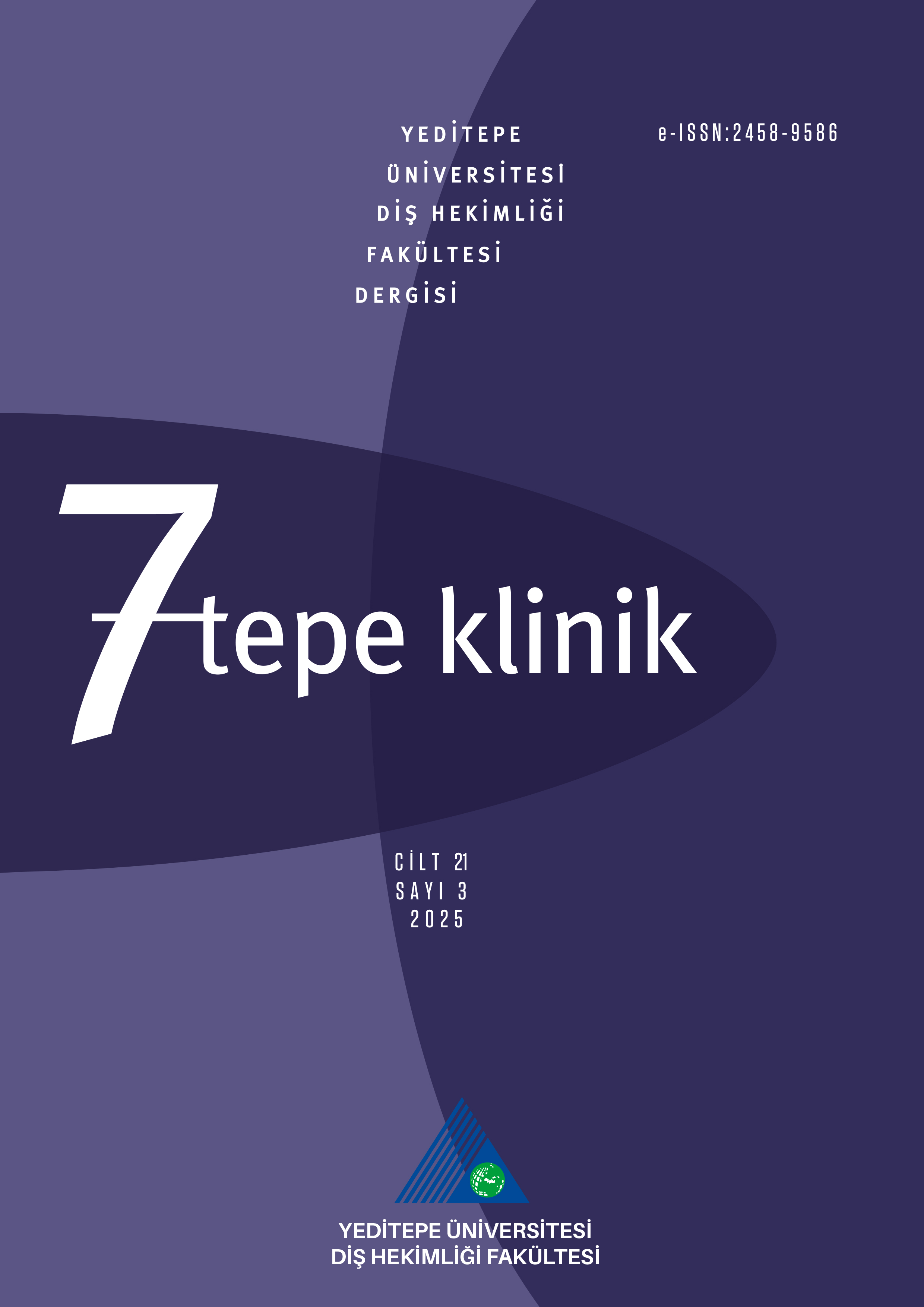Osseodensifikasyon Tekniğinin Düşük Yoğunluklu Kemiğe Yerleştirilen Dental İmplantların Primer Stabilitesi Üzerine Etkisi: Taze Sığır Kaburgasında Yapılan In-Vitro Bir Çalışma
Alper Sağlanmakİstanbul Üniversitesi Diş Hekimliği Fakültesi Oral İmplantoloji Anabilim DalıGİRİŞ ve AMAÇ: Branemarktan bu yana implant osteotomisi subtraktif yani kemik çıkarma esasına göre uygulanmaktadır. Ancak kemiğin miktarının ve mineralizasyonun yetersiz olduğu durumlarda bu teknik yetersiz primer stabilite ve öngörülemeyen osseointegrasyona sebep olabilir. Yıllar içinde bu tekniğe alternatif olarak geliştirilen osteotom tekniği ve kemiğin kontrollü genişlemesini sağlayan özel implant tasarımları ile mineralizasyonun yetersiz olduğu kemik bölgelerinde kemiğin trabeküler yapısında mikro çatlaklar oluşturarak hacim-mineralizasyon ve primer stabiliteyi artırmak amaçlanmıştır. Son yıllarda geliştirilen yeni bir teknik olan Osseodensifikasyon tekniği ile viskoelastik ve ardından plastik deformasyon ile kemiğin genişletilmesi amaçlanmıştır. Bu teknikte saat yönünün tersine hareket eden frezler süngerimsi kemiği hem apikal hem de periferik bölgelere iterek ekspansiyon ve otogreft kondensasyonu sağlarlar. Çalışmanın amacı konvansiyonel frezleme (KF) ve osseodensifikasyon frezleme (OF) ile yerleştirilen implantların primer stabilitelerinin kıyaslanmasıdır.
YÖNTEM ve GEREÇLER: Bu çalışmada tip 4 kemiği simüle eden 8 adet sığır kaburgasına 16 adet implant (Straumann®, BL SLA titanium, Basel, İSVİÇRE) KF ve OF tekniği ile yerleştirilerek primer stabiliteleri karşılaştırılmıştır. Bunun için implant yerleştirme torku (ITV) ve implant stabilite katsayısı (ISQ) kullanılmıştır. İlaveten osteotomi çapları değerlendirilmiştir.
BULGULAR: ITV, ISQ ve osteotomi çapı değişkenlerinde iki grup arasında yüksek düzeyde istatistiksel anlamlı fark bulunmuştur (p<0,001).
TARTIŞMA ve SONUÇ: Osseodensifikasyon frezleme tekniğinin özellikle düşük kemik yoğunluğuna sahip bölgelerde primer stabilite artışına olumlu katkı sağlayabileceği söylenebilir. Elbette bu frezlerin oluşturduğu geri yaylanma etkilerinin ve artan primer stabilitenin osseointegrasyona nasıl etki edeceğinin ve uzun dönemli periimplanter sağlığın iyi dizayn edilmiş randomize kontrollü klinik çalışmalarla ispatı gereklidir.
Effect of Densifying Drills on Primary Stability of Dental Implants Placed in Low-Density Bone: An In-Vitro Study in Fresh Bovine Crest
Alper SağlanmakIstanbul University Dentistry Faculty Department of Oral ImplantologyINTRODUCTION: Since Branemark, implant osteotomy has been performed on the basis of subtractive bone removal. However, this technique may cause inadequate primary stability and unpredictable osseointegration in cases where the amount of bone and mineralization is insufficient. The osteotome technique and special designed implants has been developed as an alternative to provide controlled expansion of the bone, aim to increase volume-mineralisation and primary stability by creating microcracks in the trabecular structure. Osseodensification, a new technique developed in recent years, aims to expand the bone by viscoelastic and then plastic deformation. In this technique, the counterclockwise drilling burs push the cancellous bone to both apical and peripheral regions and provide expansion and autograft condensation. The aim of the study is to compare the primer stability of implants placed by conventional drilling (KF) and osseodensification drilling (OF) techniques.
METHODS: In this study, 16 implants (Straumann®, BL SLA titanium, Basel, Switzerland) were placed in 8 fresh bovine ribs simulating type 4 bone using KF and OF techniques to compare primary stability. For this purpose, implant placement torque (ITV) and implant stability quotient (ISQ) were used. In addition, osteotomy diameters were evaluated.
RESULTS: A highly statistically significant difference was found between the two groups in terms of ITV, ISQ and osteotomy diameter variables (p<0.001).
DISCUSSION AND CONCLUSION: Osseodensification drilling technique may contribute positively to the increase in primary stability, especially in areas with low bone density. The spring-back effect of these burs and the effect of increased primary stability on osseointegration and long-term periimplant health need to be proven in well-designed randomised controlled clinical trials.
Makale Dili: Türkçe



